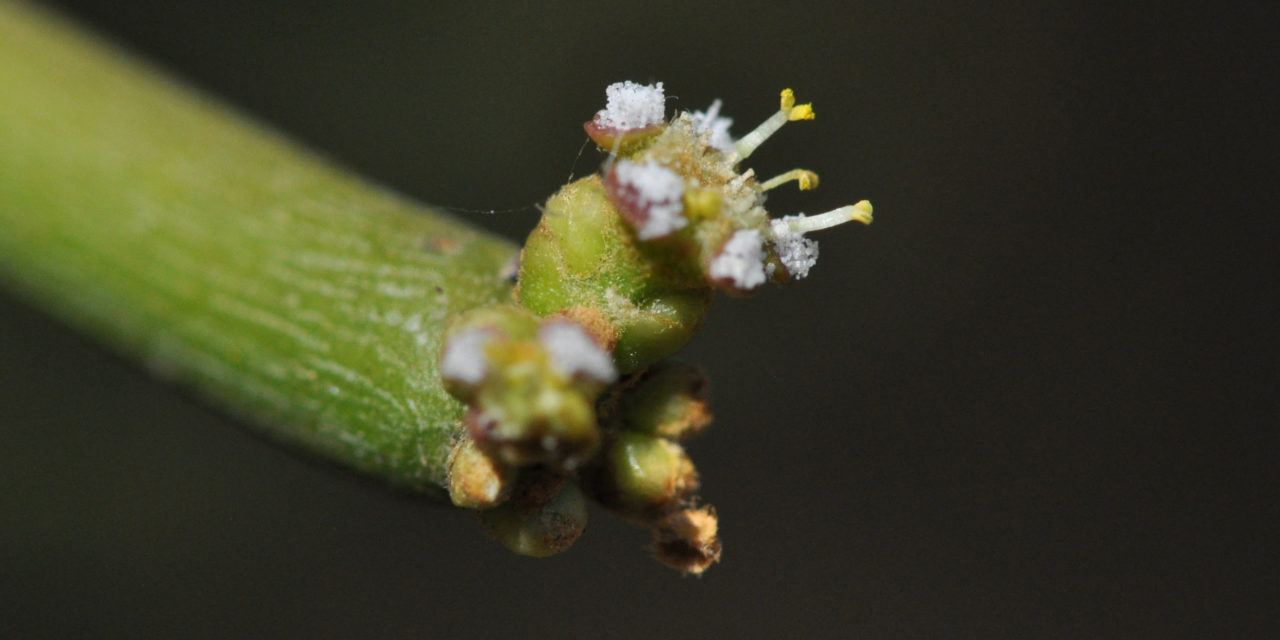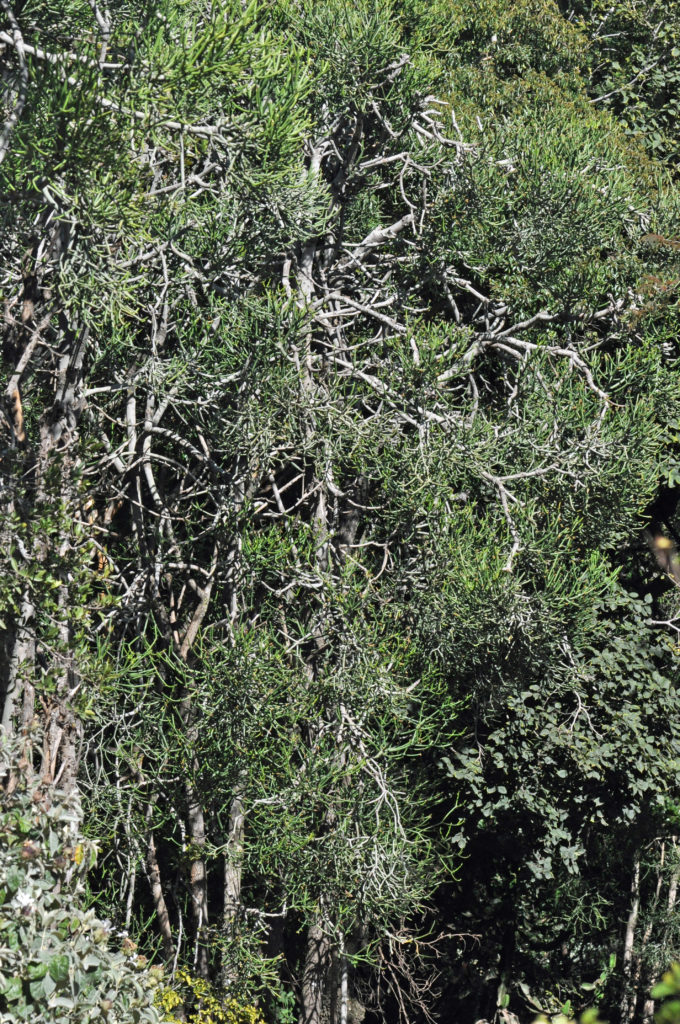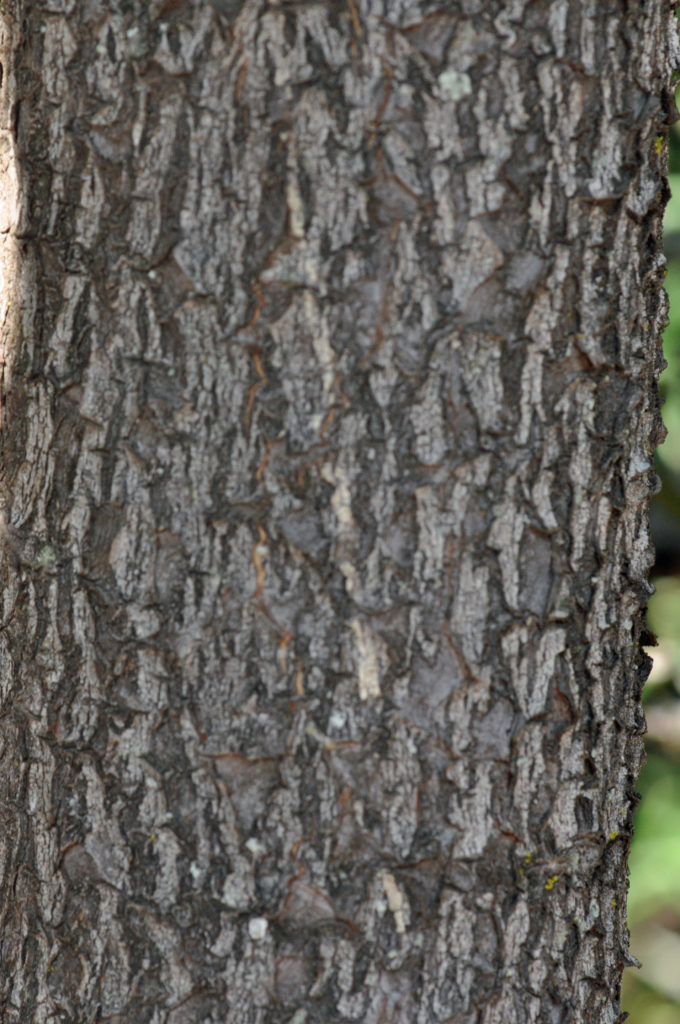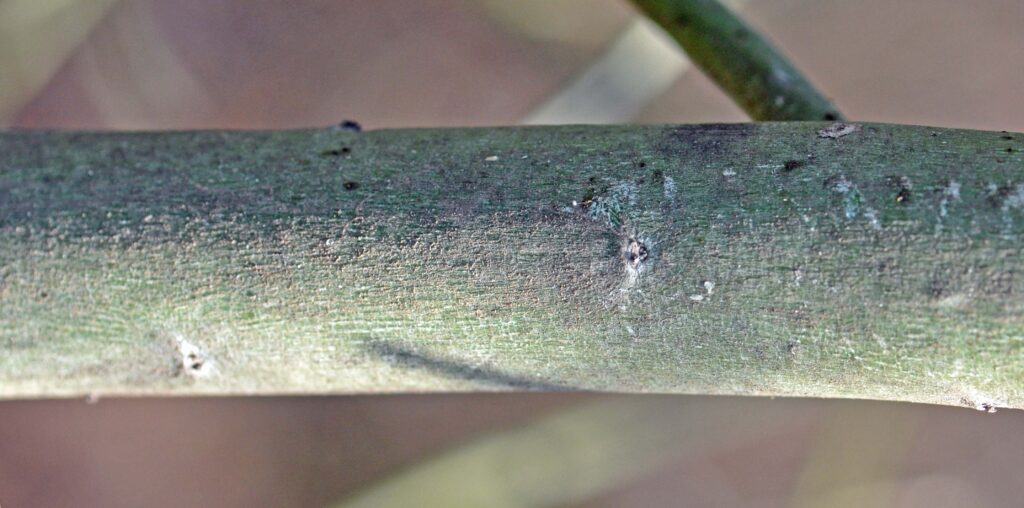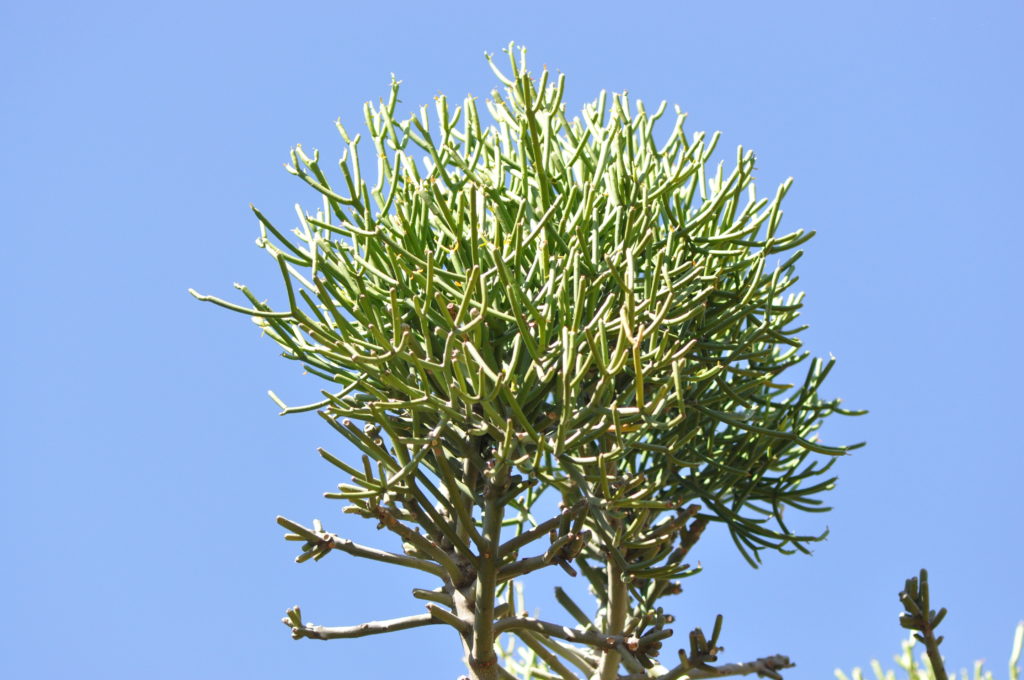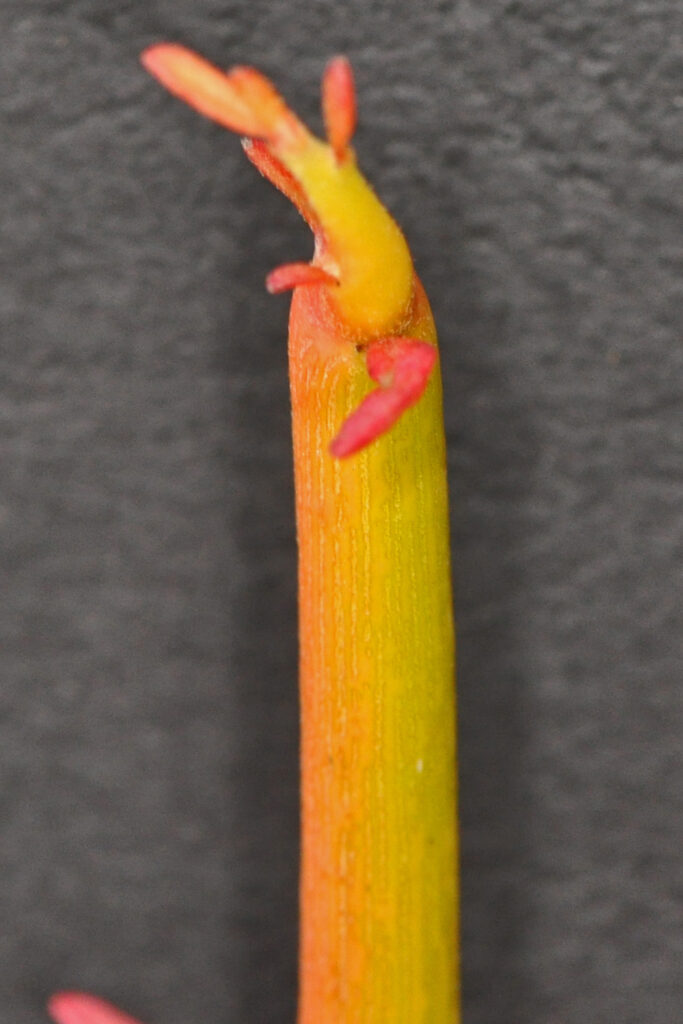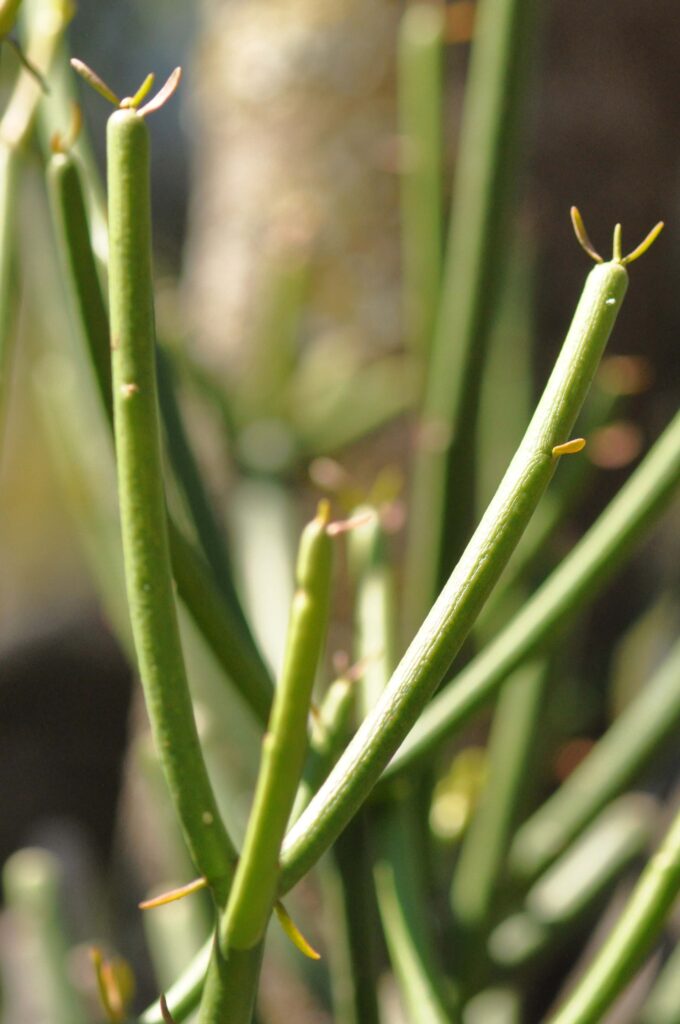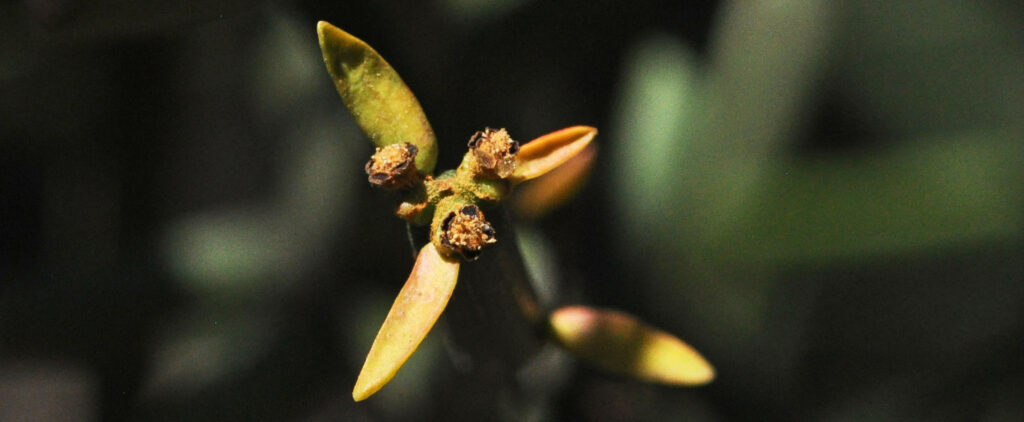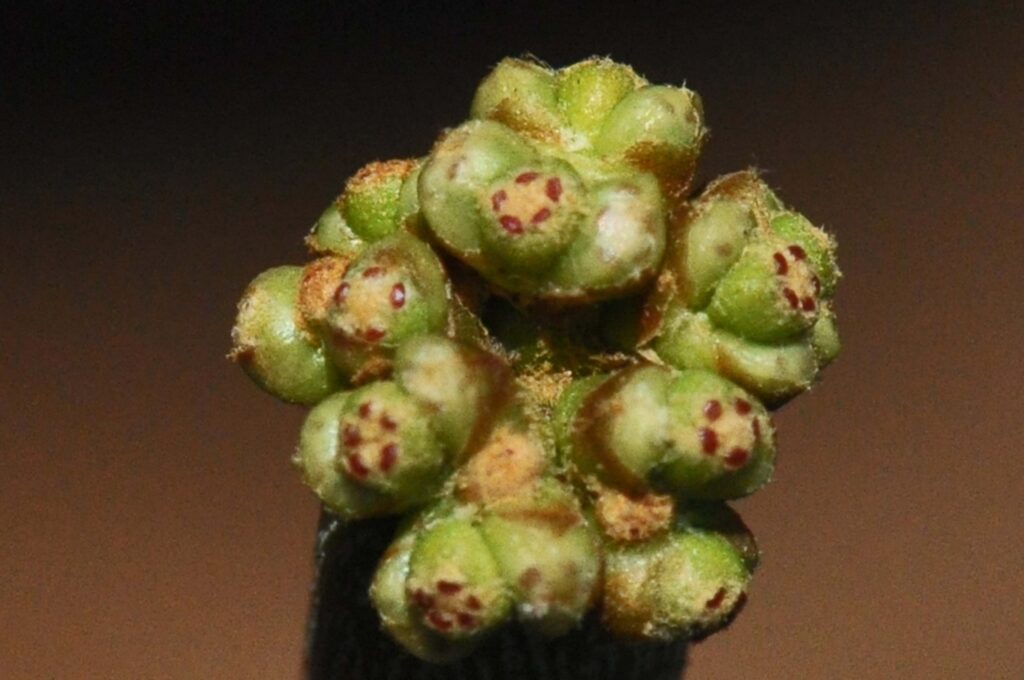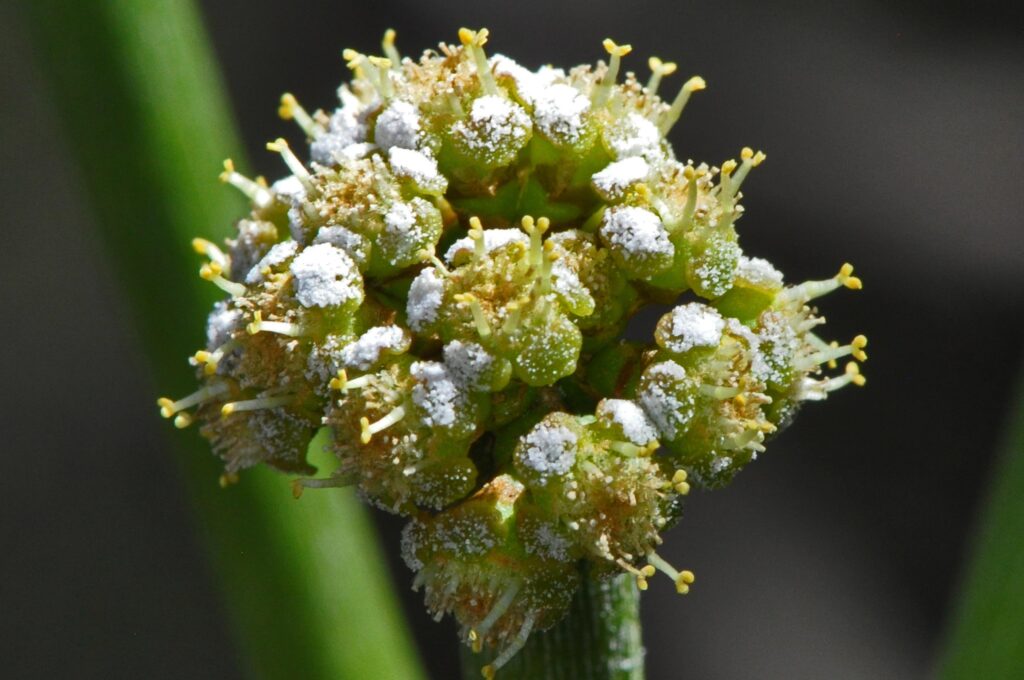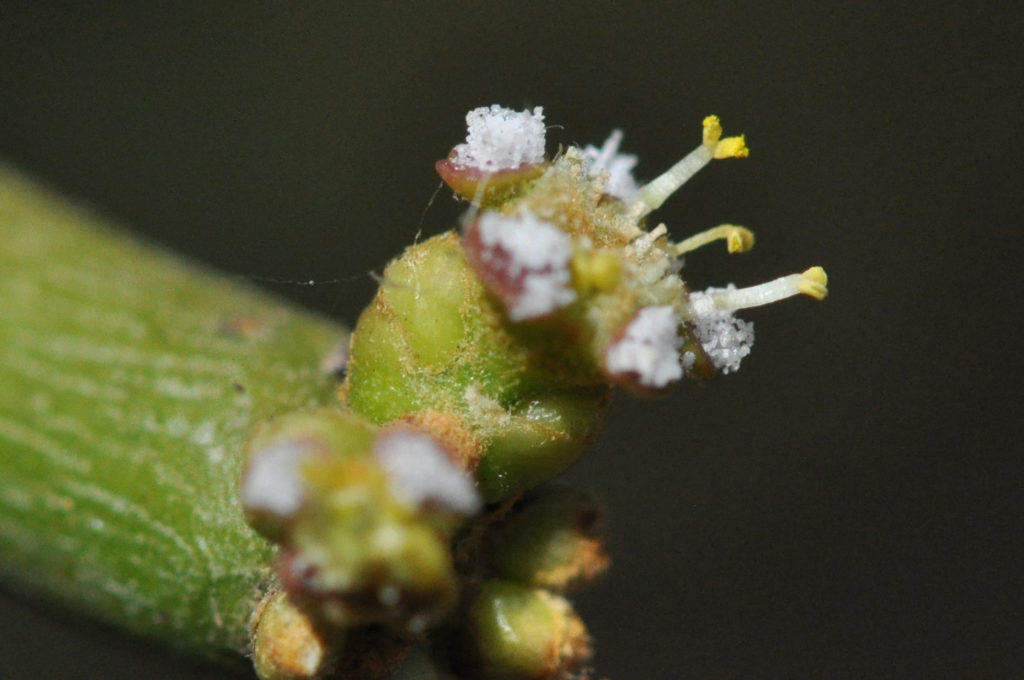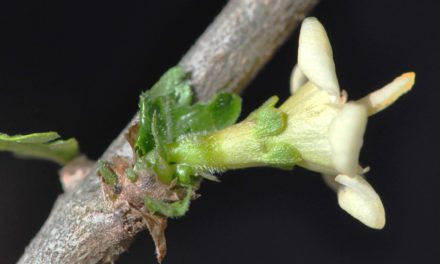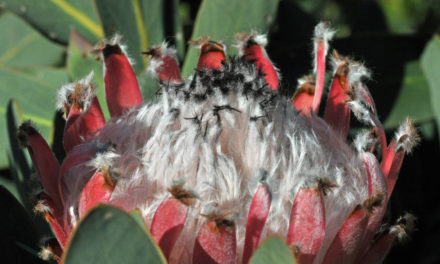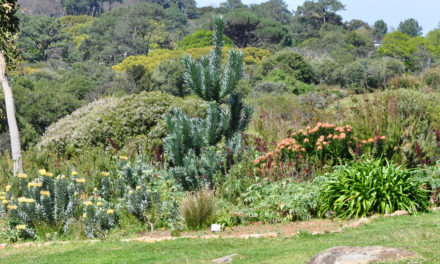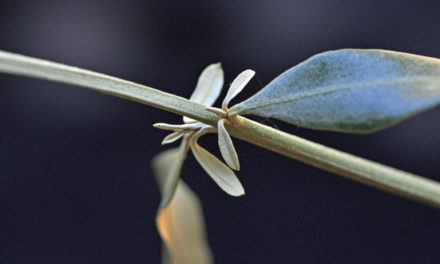General Info – summary
This spineless, succulent, straight stemmed Tree with its rough grey bark is up to 8+m high. Greenish branchlets are cylindrical. Small Leaves fall early. Unisexual yellow Flowers lack a perianth and are in cyathia. Each male flower has 1 stamen. Female flowers have 1 pistil. Coloured bracts and nectar glands attract insects. Fruit is a small globose, 3-lobed, woody capsule releasing the smooth, brown seeds.
Description
Euphorbia tirucalli
Previous Names: Euphorbia media, Euphorbia rhipsaloides, Euphorbia scoparia.
SA Tree No. 355.
Common names: (Afr) Kraalmelkbos, Kraal-melkbos, Kraalnaboom. (Eng) Hedge Euphorbia, Rubber Euphorbia, Rubber-hedge Euphorbia, Rubber Tree, Tirucalli Tree. (isiXhosa) Umhlontlo. (isiZulu) Umnduze, Umsululu, Umunde wasehlanzeni. (Northern Sotho) Motlalamela. (Setswana) More-ômotala. (siSwati) Umdvute. (Tshivenda) Mutungu. (Xitsonga) Mahumbane, Motsêtse, Sehlaresetala. (Tshivenda) Mutungu.
Family Euphorbiaceae (Euphorbias family e.g., the exotic poinsettia – Euphorbia pulcherrima). This family has about 275 genera and 7 500 species with a very wide distribution. In South Africa, there are 50 genera and 484 species. Apart from Antarctica, members of this family are present in all continents. This family has many herbs, and in the tropics, shrubs and trees, including succulents and climbers, are more common. Local tree containing genera on this website include Croton, Euphorbia, and Spirostachys. Leaves, when present, are usually alternate, simple and stipules usually appear as hairs, glands, not spines. The regular plants may be monoecious or dioecious. Inflorescences are situated terminally or in leaf axils. They are mostly in cymes (a broad, more or less flat-topped, determinate flower cluster, with central flowers opening first). Colourful bracts may be present below the flowers.
Name derivation: Euphorbia – after Euphorbus (50BC-AD19): physician to the king of Mauretania (NW Africa). tirucalli – thirkkalli / Tiru-Calli – from Malayalam: an official language in India. Hendrik van Rheede was first to record the plant in 1679. Carl Linnaeus (1707-1778) named this plant in 1753. He was responsible for development of the modern binomial nomenclature.
Conservation: National Status: L C (Least Concern). 2005 (R.H. Archer and J.E. Victor).
Tree
This variable shaped, spineless, succulent, straight Tree is usually up to 8m but may reach 12m high. It can also be a succulent shrub and may grow in dense stands. The straight Stem (photo 55) has a slightly rough, longitudinally ridged, grey Bark (photo 57). Bulges, swellings or knobs may occur on old trunks. Green Branches often develop from near the base of the stem (photo 55). In this photo, small longitudinal parallel lines are visible. The Crown of hairless, usually green Branchlets develop on stem and branch ends and may become a more or less spherical mass (photo 50). Individual branchlets are narrow – up to 8mm wide with much divided segments. Branchlets are usually cylindrical (photo 51 under Leaves). An orange form is also available at nurseries (photo 14 – under Leaves). These branchlets are spineless, opposite, alternate or clustered at the ends of the main branches. They appear to grow without a pattern.
- 55. 2017/03/21 Pretoria NBG. Photo: David Becking.
- 57. 2015/03/21 Pretoria NBG. Photo: David Becking.
- 638. 2014/ 09/13 Lowveld NBG. Photo: David Becking.
- 50. 2017/03/21 Pretoria NBG. Photo: David Becking.
Leaves
The small Leaves (photo 14, 51 & 54) are up to 12 x 2mm. They are seldom noticed as they fall early. Recent leaf scars initially form marks on young stems.
- 14. 2015/04/24. Witkoppen Nursery. Photo: David Becking.
- 51. 2017/03/21. Pretoria NBG. Photo: David Becking.
- 54. 2017/03/21. Pretoria NBG. Photo: David Becking.
Flowers
Inconspicuous flowers develop in clusters of small yellow/blue Cyathia (a cyathium is the name given to the cup-shaped inflorescence that appears to be a single flower but actually is a collection of reduced flowers, bracts and glands). In photo 462, each of the “buds” is an undeveloped cyathium. All flowers within the cyathium are unisexual and lack a perianth (calyx and corolla). Many Male Flowers surround the single Female Flower. Each male flower has only 1 protruding Stamen i.e., each visible stamen in photos 565 and 471 is produced from a single male flower. The 2 longitudinally dehiscent, yellow Anther thecae (pollen sacs) are distinctly not parallel (photo 465). The solitary Female Flower has only a single Pistil (with a single trilocular ovary, pollen receiving stigmas and 3 persistent supportive styles). Here the Ovary has one pendulous Ovule in each Locule. The surrounding coloured (light blue in photo 565), modified bracts and nectar glands attract pollinators. (Jun- Oct).
- 462. 2017/08/15. Pretoria NBG. Photo: David Becking.
- 565. 2017/10/17. Pretoria NBG. Photo: David Becking.
- 471. 2017/08/15. Pretoria NBG. Photo: David Becking.
Fruit
When mature, the globose (spherical or nearly so) green to pink and slightly 3-lobed Fruit is a small Capsule (a dry fruit resulting from the maturing of a compound ovary that usually opens at maturity by one or more lines of dehiscence). It is up to 8mm wide and rests on a short (10mm), often-bent stalk. The capsule becomes woody at maturity and splits open to release the smooth, brown Seeds that are marked with white. (Sep-Jan).
Distribution & Ecology
This resilient Plant is found up to an altitude of 1 500m in most places from the Eastern Cape (where it is not common) to KwaZulu-Natal, Gauteng, Mpumalanga, and Limpopo. It is also located in Mozambique, Swaziland, SE Botswana, Angola, Congo, Northern Namibia, Rwanda, Zambia and northwards to central Africa. These plants occur on rocky riverbanks, bushveld and rocky outcrops. They may occur in open woodland. Birds including Doves, Crested Guineafowl and Franklins eat the Seeds and Vervet Monkeys consume the Fruit. The Black Rhino is the only animal that may browse the plant. Some birds build their nests in the trees. Milky caustic Latex is present. This possibly evolved as a deterrent to herbivores. This African tree was probably taken to India by early Portuguese navigators.
Ethnobotany
Parts of the Tree have been used as an insecticide and fish poison. An inferior quality rubber has been extracted from the Sap. An unsuccessful attempt has been made to commercially extract usable petrol-like products from the plant. Since it grows in areas that cannot be used for normal agriculture this was a positive consideration. Trees serve as an effective barrier when planted as a hedge around local huts and villages. Cattle avoid this tree, and it also keeps moles away. The poisonous Latex causes burning and blistering of skin and eye contact can result in blindness. Rinse any contact with copious quantities of water. If swallowed it can be fatal. The borer resistant Wood is hard and used as roof struts. Propagation is by fresh seeds, truncheons or cuttings. Apart from being partly frost sensitive, these plants have few problems. They are survivors that prefer full sun. Local medicine makes dangerous use of this plant.
References
Archer, R.H. & Victor, J.E. 2005. Euphorbia tetragona Haw. National Assessment: Red List of South African Plants version 2020.1. Accessed on 2023/05/24.
Boon, R. 2010. Pooley’s Trees of eastern South Africa. Flora and Fauna Publications Trust, Durban.
Coates Palgrave, M. 2002. Keith Coates Palgrave Trees of Southern Africa, edn 3. Struik, Cape Town.
Lawrence, G. H. M, 1951. Taxonomy of Vascular Plants. The Macmillan Company, New York. Tenth Printing 1965.
Palmer, E. & Pitman, N. 1972. Trees of southern Africa, Balkema, Amsterdam, Cape Town.
Schmidt, S. Lotter, M. & McCleland, W. 2002. Trees and Shrubs of Mpumalanga and the Kruger National Park.
van Wyk, B. & van Wyk, P. 1997 Field guide to Trees of Southern Africa, Struik, Cape Town.
http://www.plantzafrica.com/plantefg/euphorbtirucal.htm
https://en.wikipedia.org/wiki/Euphorbia_tirucalli
https://www.hort.purdue.edu/newcrop/duke_energy/Euphorbia_tirucalli.html
http://posa.sanbi.org/flora/browse.php?src=SP

